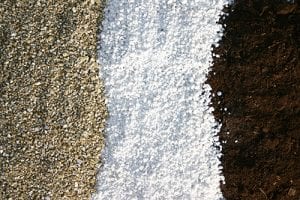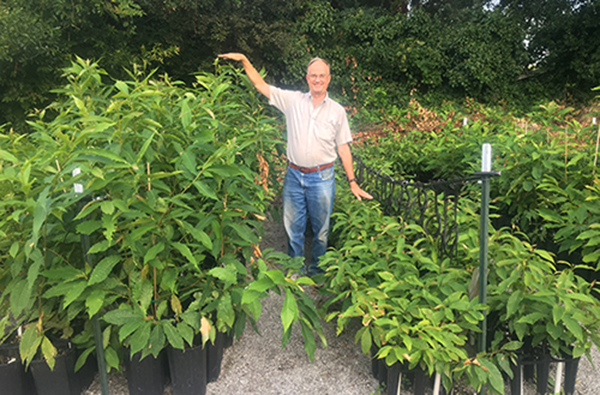While March has come in like a lion for some of us, it also marks the kick off to the growing season with one of the first harbingers of spring. Some may think about blooming forsythia, or the emergence of snowdrops and crocuses as clear signs of warmer weather to come. But those of us working with American chestnut have a different sign that we’re nearing the start of another field season: planting chestnuts in pots. Whether starting hundreds, thousands, or just a handful of potted seedlings, chestnuts harvested last fall have been stored, stratified, and are probably sprouting a radicle. They are ready to begin their journey to become trees. Here are a few quick tips, and some great resources, to help you start them on that path.
The Basics
So you have your sprouted chestnut seeds, now what? To start your chestnuts in pots, you need four basic things: pots, potting media, water, and light. Here are just a couple things to keep in mind:
Pots – American chestnut is a tap-rooted tree and the root system is best accommodated in a tall, skinny container. This general shape can be found in a range of pot sizes and you want to pick something that matches the amount of time the seedling will be growing in the container. If you will be out-planting as soon as the weather is warm enough, a smaller pot is fine. If you want to grow a large seedling for a demonstration or educational planting and/or may be growing the seedling for a season or more, go with something larger. For a quick DIY option, waxed cardboard milk or juice containers work well, just make sure to provide some drainage holes.
Potting media – American chestnut prefers a well-drained mix. The “standard” is 1/3 each peat, perlite, and vermiculite, though many commercial blends work well. Just look for something that has good moisture control and drainage, and won’t stay too saturated.
Water – American chestnut does not like to be too wet. Like any plant, some water is needed to support the seedling, but let the media dry out a bit between waterings. Damping-off, the sudden death of a newly sprouted plant caused by a handful of fungi, can be a common problem when soil is kept too wet.
Light – American chestnut needs a warm, bright place to sprout and grow.

Equal parts peat, perlite, and vermiculite are the “standard” potting mix for American chestnut. Photo by Paula Murakami
Additional Resources
For more in-depth instructions and information about planting and growing American chestnuts in pots, there are several great resources available if you know where to look.
Fact sheets from TACF’s eNormous library:
Planting American Chestnuts in Pots
Growing Chestnuts: A Guide to the Basics
Great instructional video created by Dr. Hill Craddock from the University of Tennessee – Chattanooga: Chestnut Planting Tutorial
How-to article from July 2010 issue of The Journal of The American Chestnut Foundation: Planting American Chestnuts in Pots – page 18
Planting and Growing resources on the Penn State Chestnut Growers website
When in doubt, ask for help. You can find contact info for your local state chapter, or Regional Science Coordinator on TACF’s contact page.

Pot size matters. The same seed lot was planted in two different sized pots and you can clearly see the difference in size of the resulting seedling. Photo by Hill Craddock
